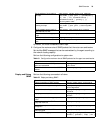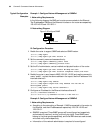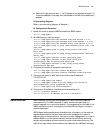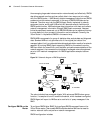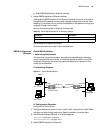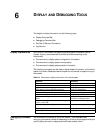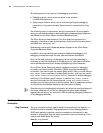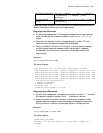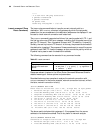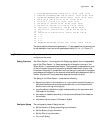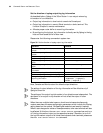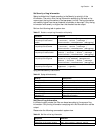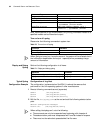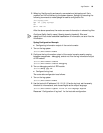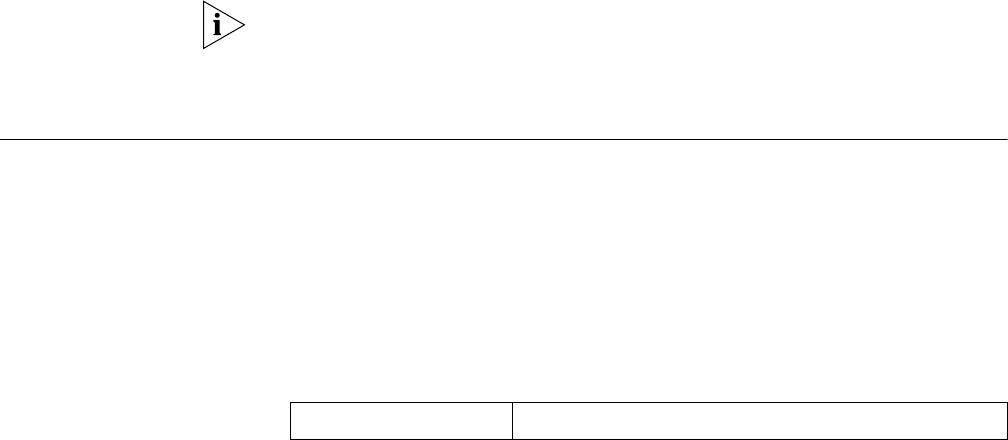
86 CHAPTER 6: DISPLAY AND DEBUGGING TOOLS
Two switches control the output of the debugging information:
■ Debugging switch, which controls whether to test a certain
function/module/protocol.
■ Syslog output direction switch, which controls outputting the debugging
information to the control console, Telnet terminal or internal buffer or log
host.
The following is part of the common debugging commands. For more specific
debugging commands related to various protocols, please see related chapters in
this manual and the 3Com Router Command Reference Guide.
The 3Com Router provides a shortcut Ctrl+D to close the huge amount of
debugging information output by the terminal, which functions the same as the
command
undo debugging all.
Examples are omitted here. Please see relevant chapters in the 3Com Router
Command Reference Guide.
In addition, when any terminal user enables or disables the debugging, the
debugging information output on other user terminals will be affected.
As for all link layer protocols, the debugging can be controlled according to
interfaces, so that the interference of a huge amount of redundant information
can be avoided effectively and it makes troubleshooting more convenient.
On the 3Com Router, Syslog (log system) manages the output of debugging
information and other prompt information. Before obtaining the debugging
information, you need to open the related Syslog switch. Firstly, you must use the
info-center enable command to enable Syslog function, then you can use the
info-center console or info-center monitor command to enable debugging
according to the different type of terminal, or use the
info-center console
debugging
command on the Console terminal, or use info-center monitor
debugging
on the telnet terminal or dumb terminal. Refer to subsequent sections
for introduction and detailed descriptions and commands of Syslog.
Since the output of the debugging information will affect the running efficiency of
the router, please do not turn on any debugging switches unless necessary,
especially the
debugging all command. After completing debugging, please turn
off all debugging switches.
Test Tool of Network
Connection
Ping Command The ping command is mainly used to check the connection of the network, i.e.
whether the host is accessible. Ping sends Internet Control Message Packets
(ICMP) echo packets to another computer connected on the network to see
whether it echoes back. Ping is a useful command to test the connectivity of the
network and details about the journey.
Table 65 ping command
Operation Command




